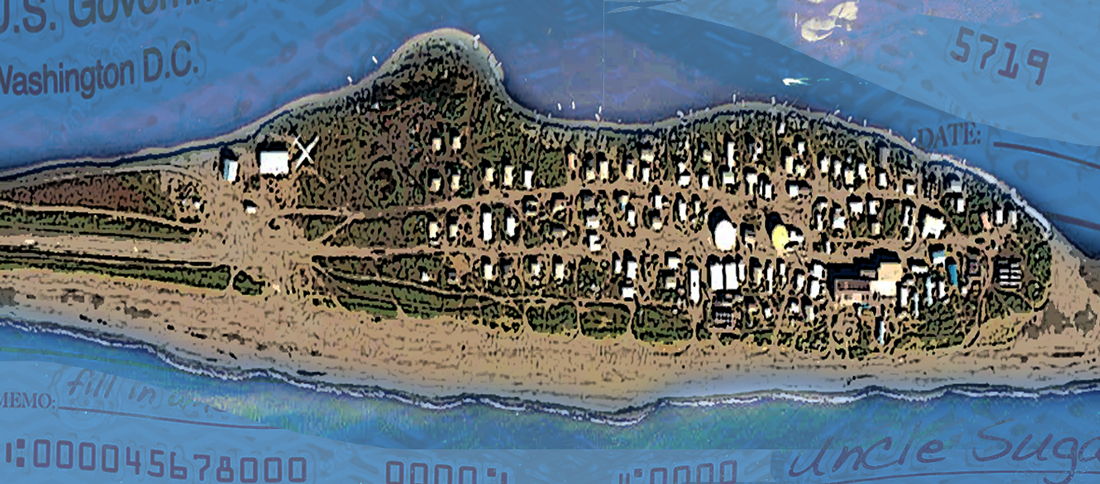Apparently, it takes a federal government to move a village.
Thinning ice sheets have made it hard for the people of Kivalina, a seaside village in Alaska, north of the Arctic Circle. The Iñupiats who live there have lived off the sea, especially bowhead whales, for a mighty long time. And climate change, town officials say, has raised havoc with their traditional occupation.
Worse yet, the federal government suspects that soon Kivalina will become uninhabitable. “The question now facing the town, the state of Alaska, and the nation,” Chris Mooney writes in the Washington Post, “is whether to move the people of Kivalina to a safer location nearby, either inland or further down the coast — and who would pay upwards of a hundred million dollars to do it.”
If you look at the sandbar upon which Kivalina rests, you can see why it might be subject to erosion and the vagaries of the weather.
But does that make it a government concern? Really?
In times past, it wasn’t up to taxpayers to guarantee every outpost of humanity’s continued existence. When a way of life became untenable in a given place, the people moved.
Now, folks tend to look to governments, seeing their “communities” as something others owe them, rather than something they must work to keep.
A bad sign if climate change proves real and massive.
If it takes over a $100 million to move a village with 400 people, what happens when whole cities must be abandoned? I’m sure government will be involved, but if a million Americans must move, we cannot afford to spend the Kivalina ratio: $250 trillion is quite a price tag.
This is Common Sense. I’m Paul Jacob.

1 reply on “Millions to Move 400 Villagers”
Odd, we have federally subsidized flood insurance, so let’s pass a law they all have to buy it, like Obamacare. Then the problem will be solved.